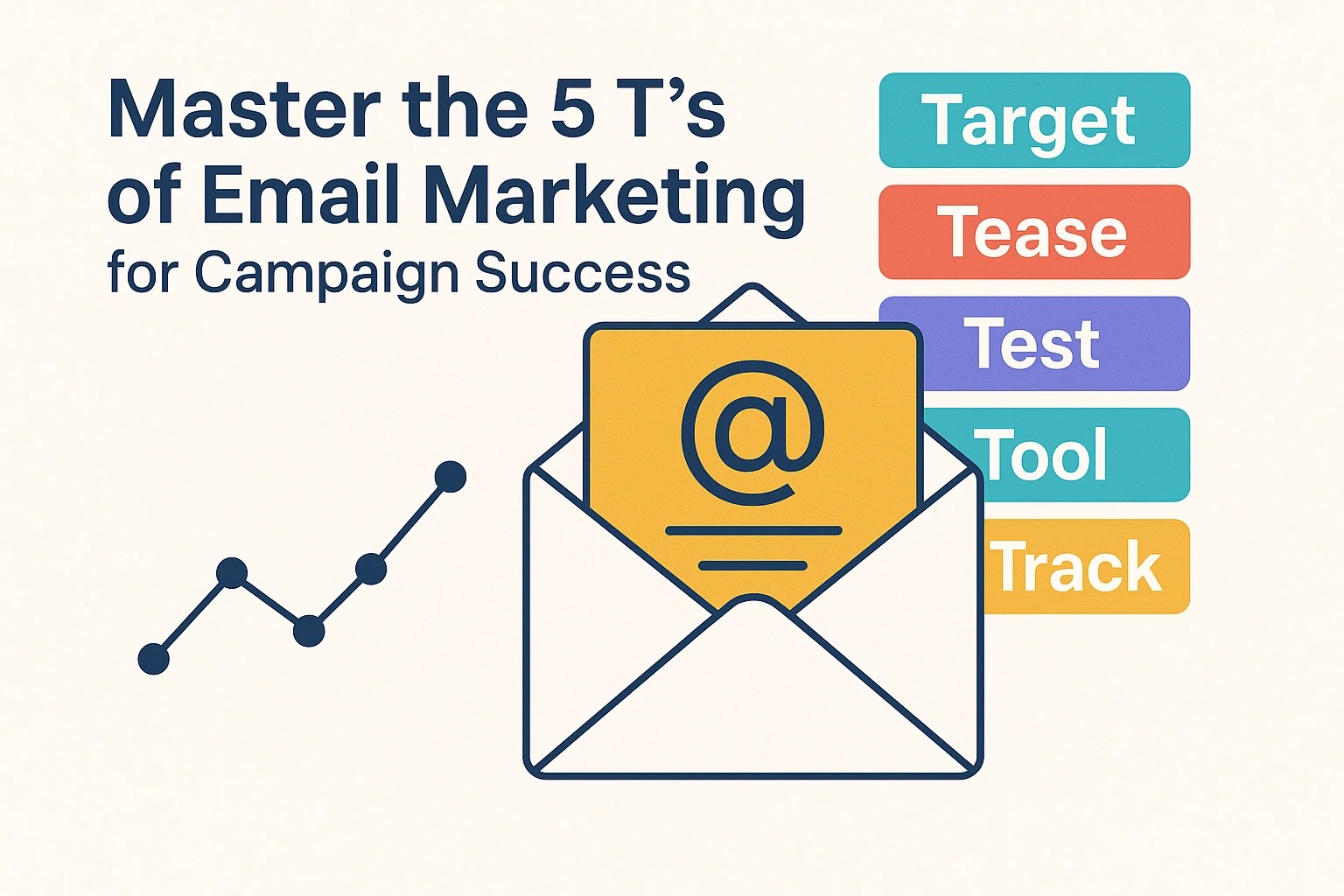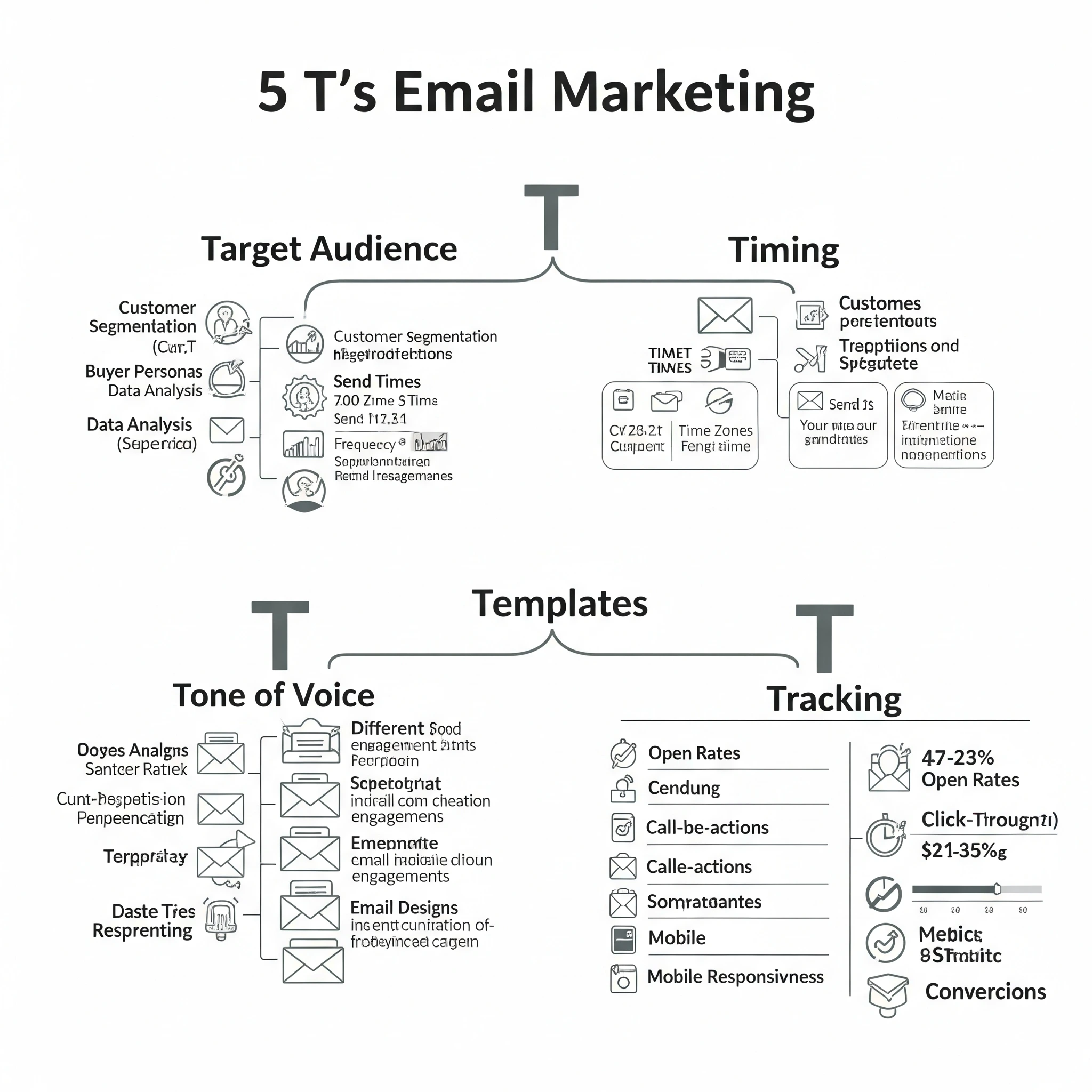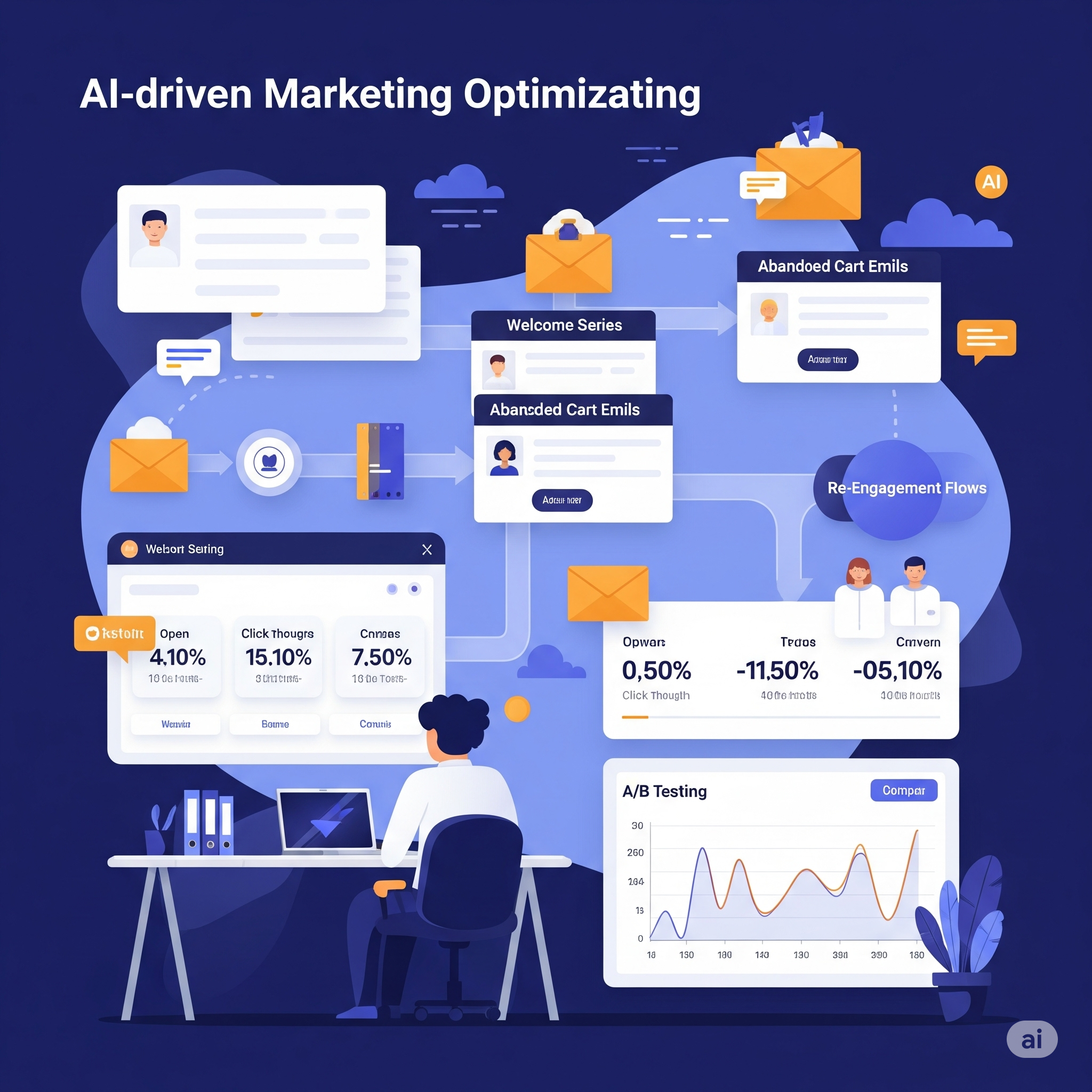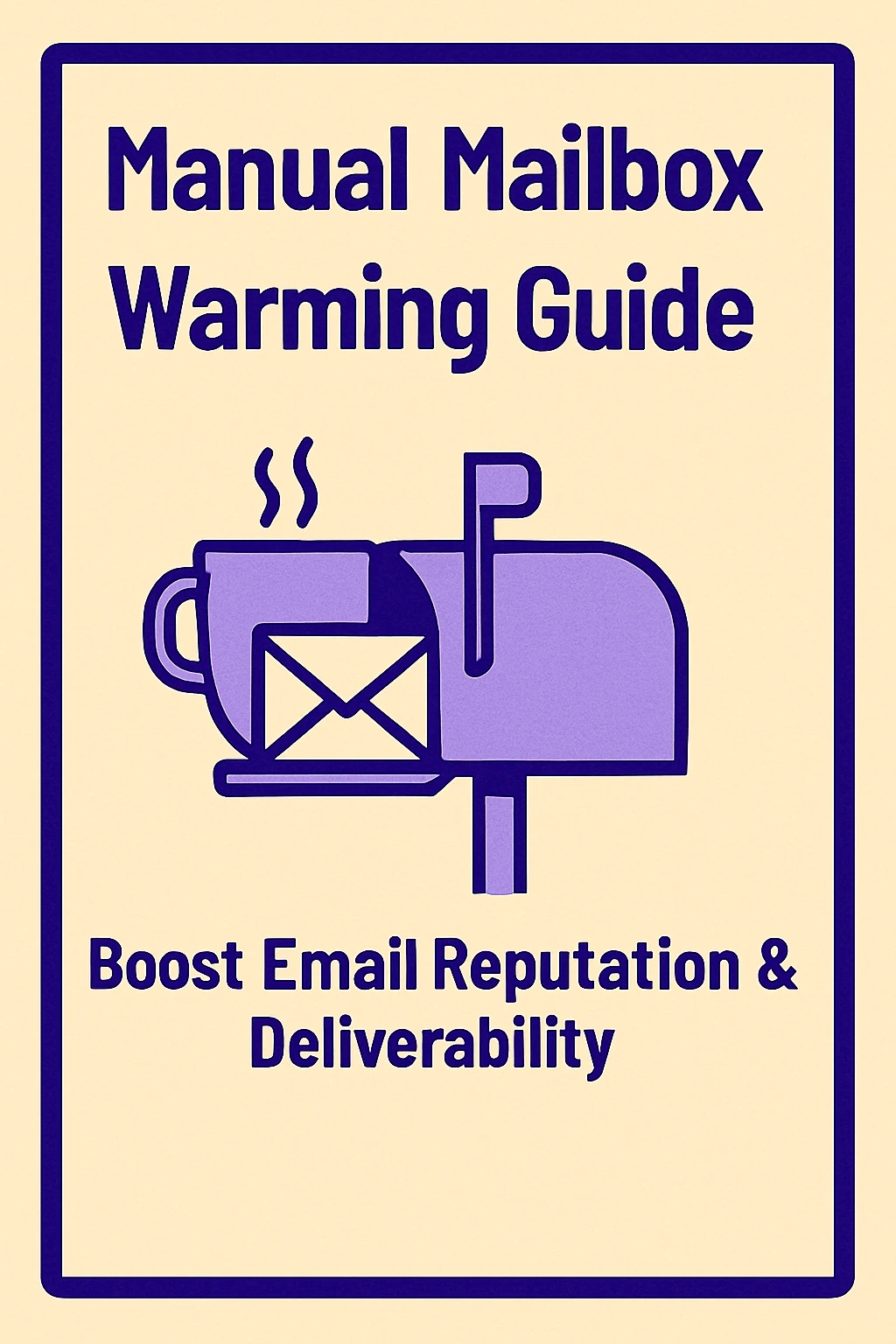Master the 5 T’s of Email Marketing for Campaign Success
This blog breaks down the 5 T’s of Email Marketing—Target, Timing, Tone, Templates, and Tracking, into a clear, actionable framework for modern marketers. You'll learn how each element contributes to better inbox placement, higher engagement, and stronger campaign performance. Whether you're just starting or refining a mature strategy, this guide helps you send smarter, more relevant emails. Plus, it shows how tools like MailKarma.ai can enhance your infrastructure, protect your sender reputation, and unlock hidden deliverability insights.

Email marketing remains one of the most cost-effective ways to engage customers, but its success depends on more than just sending out a few newsletters. In a crowded inbox, your message only stands out when it’s backed by a smart strategy. That’s where the 5 T’s of Email Marketing come into play Target, Timing, Tone, Templates, and Tracking. This practical framework helps marketers move away from random blasts and toward intentional, well-crafted campaigns that resonate with specific audiences. Rather than relying on trends or guesswork, the 5 T’s give your email program structure, clarity, and purpose.
Each “T” addresses a critical piece of the email puzzle. From understanding who you're talking to and when they’re most likely to engage, to crafting the right voice and optimizing your layout, this framework keeps every part of your email strategy aligned. And with support from platforms like MailKarma.ai, you’re not just optimizing content, you’re also monitoring sender health, deliverability, and inbox placement. The result? Smarter campaigns that land where they’re supposed to, and get read.
What Are the 5 T's?

The 5 T’s of Email Marketing is a simple yet powerful framework designed to bring structure, clarity, and consistency to your email campaigns. Instead of guessing what might work, the 5 T’s help you focus on the core elements that drive real results, Target, Timing, Tone, Templates, and Tracking.
- Target: Know who you’re talking to and why it matters to them.
- Timing: Find the moments when your audience is most likely to engage.
- Tone: Speak in a voice that sounds like your brand and feels human.
- Templates: Design layouts that look good and get results—everywhere.
- Tracking: Use what you learn to keep improving.
Why a Framework Helps Email Succeed
Without a solid framework, email marketing becomes a guessing game. Many teams get stuck in a cycle of sending campaigns without clear goals or strategy, hoping something sticks. But hope isn’t a plan. A framework like the 5 T’s helps marketers stay focused on what truly moves the needle: relevance, timing, voice, design, and results. It turns email from a reactive channel into a proactive one. Instead of asking “why didn’t this email perform?” you begin to ask “what can we improve next?” That shift in mindset is where real growth happens.
More importantly, a framework creates consistency. Whether you’re a team of one or managing a large email program, the 5 T’s keep everyone aligned on what matters. It ensures every email serves a purpose and every campaign has a measurable objective. When combined with deliverability tools like MailKarma.ai, the framework becomes even more powerful, giving you not only strategic direction but also the technical insights to stay out of spam folders and land directly in your audience’s inbox. In short, a framework isn’t just helpful, it’s essential.
The 5 T's Explained
1. Target
Your email campaigns are only as strong as the audience you send them to. That’s why targeting is the foundation of successful email marketing. Instead of broadcasting the same message to your entire list, smart marketers segment their audience based on behavior, purchase history, engagement levels, location, or stage in the buyer journey. This level of personalization turns generic campaigns into relevant, meaningful conversations.
Understand Who You're Talking To
Dive into your data. What are subscribers buying? What content do they click? Use this to speak directly to their needs. If you’re guessing, you’re probably missing.
Segment for Smarter Sends
Group your list by behaviors, interests, or past activity. Send first-time buyers different content than long-term customers. You’ll see better engagement and fewer unsubscribes.
Go Beyond ESP Data
Platforms like Mailchimp and Klaviyo offer good segmentation tools. But MailKarma.ai gives you the deeper context: who’s active, who’s dragging your deliverability down, and what to do about it.
2. Timing
Even the best-written email can fail if it arrives at the wrong moment. Timing is about sending emails when your audience is most likely to engage—not just when it's convenient for your team. Every audience has its pattern, and identifying that sweet spot can dramatically improve open and click-through rates. A/B testing and engagement analytics are essential for figuring out when your readers are most responsive.
When Should You Send?
There’s no universal “best time.” Mornings midweek tend to do well, but use your data. Look at when subscribers open your emails and start testing.
Keep a Consistent Rhythm
Whether it’s weekly, biweekly, or monthly, stick to a schedule. Going silent for weeks then blasting out an offer is a recipe for low opens and high unsubscribes.
Use Data to Pinpoint Timing
A/B test different send times, then review the results. And use MailKarma.ai to spot if a mistimed campaign is triggering spam filters or hurting placement.
3. Tone
Tone is the voice your brand uses in every message, and it can make or break how your audience feels about you. A good email should feel like it was written by a real person, not generated from a script. Whether your tone is playful, professional, helpful, or direct, the key is consistency. Your audience should recognize your brand personality immediately, regardless of who’s writing the email.
Stay True to Your Brand
Pick a tone that fits your business. A legal firm won’t write like a sneaker brand. But both should sound like humans, not copy-paste marketers.
Formal vs. Casual: Know Your Reader
If your audience expects expertise, a polished tone works. If they want quick deals or lifestyle tips, loosen it up. Read your email out loud—if it sounds awkward, rewrite it.
Show, Don’t Just Tell
“Hey [FirstName], we made something just for you.” “Thanks for subscribing—your welcome discount is inside.”
Tone that feels personal builds connection.
4. Templates
The look and layout of your email matter more than many marketers realize. A clean, well-designed template doesn’t just make your email prettier—it makes it easier to read, navigate, and act on. Simplicity is key: stick to one clear message, use a logical content structure, and make your CTA easy to find. Most importantly, your emails should be fully responsive and look great on both desktop and mobile devices.
Design with Purpose
Focus on one goal per email. Make the CTA pop. Use hierarchy: headline, body, button. Visuals should support, not distract.
Mobile-First Always
Most subscribers read emails on their phones. Test every template on mobile. If people need to pinch and zoom, you’ve already lost them.
Personalize the Experience
Dynamic templates let you switch out offers, product suggestions, or articles based on the user. Go beyond “Hi [Name]” and show you know them.
5. Tracking
Without tracking, you’re flying blind. Measuring how your emails perform is the only way to improve over time. Metrics like open rates, click-through rates, unsubscribes, bounce rates, and spam complaints give you a surface-level view of engagement—but they’re only part of the picture. The real value comes from understanding why your emails perform the way they do.
What to Measure
- Opens and clicks (basic but necessary)
- Bounce rates and complaints (critical for deliverability)
- Inbox placement trends (key for long-term success)
Better Tools, Better Insights
MailKarma.ai gives a full view—reputation scores, spam risks, authentication checks, and delivery issues. It’s your early warning system.
Use It to Improve
Don’t just collect data—act on it. See where you’re losing people. Test different subject lines, CTAs, or layouts. Learn and refine.
How to Roll Out the 5 T’s

Bringing the 5 T’s, Target, Timing, Tone, Templates, and Tracking, into your email marketing doesn’t require a massive overhaul. It starts with intention. First, look at your existing campaigns. Are you sending the same message to everyone? Are your emails arriving at times when your audience is likely to engage? Begin by cleaning your list and creating meaningful segments. This allows you to target different audiences with messages that actually matter to them. Then, analyze past engagement to determine the best times to send—and test consistently to refine your timing.
Get Started
- Clean your list and segment it
- Pick a tone and stick to it
- Test your send time
- Simplify your email design
- Use MailKarma.ai to validate your technical setup
Avoid These Mistakes
- Sending bulk emails without targeting
- Writing in a tone that doesn’t match your brand
- Ignoring mobile design
- Neglecting bounce or spam data
Real Results with the 5 T’s
One SaaS brand improved open rates by 30% after breaking users into role-specific segments. An e-commerce business cut unsubscribes in half by switching to a cleaner, mobile-friendly design. Both tracked improvements with MailKarma.ai to keep their sender scores strong.
Next-Level Tactics
Once you’ve built a solid foundation with the 5 T’s, the next step is optimization. That’s where automation and AI can take your strategy from good to great, if used correctly. Start by building automated journeys that feel personal, not robotic. Welcome series, abandoned cart emails, and re-engagement flows should all follow the same principles of relevance, timing, and tone. Even in automation, your emails should sound like they were written for that specific moment, not pulled from a standard template.
Automate, But Keep It Personal
Use automation for welcome flows, post-purchase follow-ups, and re-engagement. But write those emails like a real person would.
Let AI Guide You, Not Replace You
AI tools can spot trends and help with timing. But keep the voice, message, and empathy human.
Test More Than Subject Lines
Try different tones. Test long vs short copy. Move the CTA. Learn from every send.
Want Smarter Email Campaigns?
You don’t need luck, you need a plan. The 5 T’s give you that plan. And MailKarma.ai gives you the data to execute it with confidence.
Book your free demo today and start turning your emails into results.
Wrap-Up: The 5 T’s Recap
To recap:
- Target your audience properly
- Time your sends for peak engagement
- Use a consistent, appropriate Tone
- Design clear, clean Templates
- Track everything and learn from it
Together, these five elements give you a solid foundation to build campaigns that work.
Conclusion
The 5 T’s, Target, Timing, Tone, Templates, and Tracking, give email marketers a clear, repeatable strategy to improve engagement and inbox placement. Each element plays a vital role in making your emails more relevant, human, and effective. When applied together and supported by smart tools like MailKarma.ai, the 5 T’s turn your email program into a powerful, results-driven channel.
Final Word
If email is part of your marketing stack, don’t leave it up to chance. Use the 5 T’s to take control, and back it up with the technical insights from MailKarma.ai. You’ll send fewer emails, get better results, and know why.
Curious how your emails stack up? Book a free MailKarma.ai demo and see what’s happening behin
FAQs
What is the most important T in email marketing?
Targeting is key. If you’re sending to the wrong audience, nothing else matters.
How often should I send emails?
Start with a regular cadence (like weekly), then adjust based on engagement and feedback.
How do I track email marketing success?
Use open and click data—but also track spam complaints, inbox placement, and domain health using MailKarma.ai.
Can the 5 T's framework work for all industries?
Yes. Whether you're B2B, B2C, SaaS, or services—the 5 T’s are adaptable to any email strategy.
Recent Blogs
FAQs: Everything You’re Wondering About Cold Email Deliverability & MailKarma’s Infrastructure
MailKarma is a dedicated email infrastructure solution built exclusively for cold email outreach. Unlike shared inbox tools or general ESPs, MailKarma gives you complete control over your sending setup—private US IPs, clean domains, and expert-backed deliverability practices. Built by cold email pros, MailKarma is optimized to scale outreach without landing in spam.
Because MailKarma sets up private infrastructure—including custom domains and mailboxes—it doesn’t offer a traditional free trial. However, you can explore the platform, view your dashboard, and test features before provisioning infrastructure. Our private dedicated email servers cost $150 per server plus $0.001 per email sent, making it extremely cost-effective for high-volume cold email campaigns. For Gmail Workspace solutions, pricing starts at $3.50 per email with a 10-email minimum, dropping to $2.50 per email for volumes over 100 emails. This transparent pricing model ensures you only pay for what you use while maintaining enterprise-grade email deliverability.
Yes. MailKarma automatically sets up SPF, DKIM, and DMARC records using best-in-class standards. No technical hassle—our system handles everything behind the scenes, and our support team is always ready to assist if needed.
Every MailKarma subscription includes:
- Automated DNS setup (SPF, DKIM, DMARC)
- Private mailbox hosting
- Ongoing deliverability optimization
- Server monitoring and uptime guarantees
It depends on your monthly sending volume and the number of contacts per sequence. To simplify this, MailKarma includes a volume-based calculator inside the app to help you choose the optimal setup for scale, safety, and inbox placement.
Gmail and Outlook aren't built for cold outreach—they throttle volume, rotate IPs, and limit deliverability. MailKarma gives you:
- Dedicated infrastructure
- Warmed IPs and aged domains
- No shared resources
- Built-in best practices for cold outreach
It's the infrastructure your outreach actually needs.

.png)



